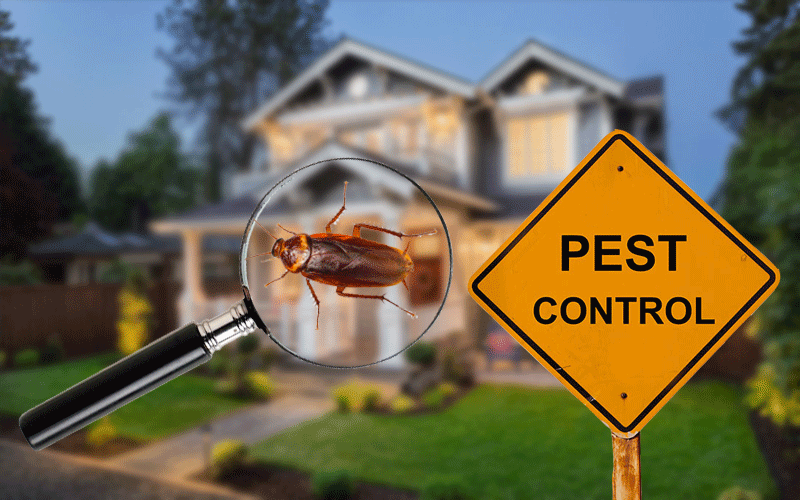Bug Control 101: Identifying Common Vermin and Their Reliable Therapies
Parasite control is a fundamental facet of keeping a healthy and balanced living atmosphere. Typical insects like ants, rodents, and numerous pests can pose significant challenges. Recognizing their actions and indications of invasion is essential for effective monitoring. While chemical solutions exist, there are additionally natural alternatives worth thinking about. As one discovers the nuances of pest recognition and therapy choices, the relevance of avoidance techniques comes to be significantly noticeable. What approaches can really keep pests at bay?
Identifying Ants: Types and Their Habitats
Ants, tiny yet formidable pests, are a diverse team that can be found in numerous environments across the world. There more than 12,000 determined varieties, each showing unique actions and adjustments. Usual types consist of the black garden ant, which flourishes in temperate locations, and the fire ant, known for its painful sting, common in warmer regions. Carpenter ants like wet timber, making them a worry for property owners, while fragrant house ants are drawn in to human food sources.
Ants build detailed nests, commonly underground, in timber, or within structures. Their habitats vary from forests to metropolitan settings, showcasing their adaptability. The majority of varieties are social, living in swarms that can differ in dimension from a couple of lots to millions. Identifying the kind of ant is crucial for efficient bug monitoring, as each types has different nesting behaviors and foraging actions that influence control strategies. Recognizing their habitats aids in prevention and treatment efforts.
Recognizing Rodents: Indicators of Infestation
Rats, like ants, can posture significant challenges for property owners and businesses alike. Identifying indications of a problem is vital for effective insect control. Usual indicators include droppings, which are commonly discovered near food sources or nesting locations; little, dark pellets that can be mistaken for seeds. Chewed wires, furnishings, or packaging may likewise signify a rodent existence, as they continually munch to maintain their teeth workable. Furthermore, homeowners could discover gnaw marks on baseboards or walls. Unpleasant smells, coming from urine and droppings, can indicate a larger problem. Scraping or hurrying sounds, especially at night, are another dead giveaway of rodents. Lastly, the existence of nests, commonly composed of shredded materials like paper or fabric, can verify an infestation. Dealing with these signs without delay can aid alleviate damages and stop the spread of illness connected with rodents.
Usual Insect Pests: From Aphids to Termites
Pests represent a varied team of parasites that can create chaos in homes and yards, with species varying from little aphids to devastating termites. Aphids are little, sap-sucking insects that can quickly infest plants, leading to stunted growth and distortion. They typically bring in ants, which protect them from all-natural killers. On the other end of the range, termites are well-known for causing substantial structural damages to wooden structures. They eat cellulose discovered in timber, endangering the honesty of structures and homes. Other usual insect parasites consist of roaches, which prosper in unsanitary conditions, and insects, understood for their bites and trouble in elimination. Flies, particularly houseflies, can infect food and transfer diseases, while mosquitoes position health dangers with their bites. Efficient bug management starts with determining these pests and comprehending their behaviors, which is important for shielding and stopping infestations both residential or commercial property and health and wellness.
Reliable Treatments: Chemical and Natural Solutions
While house owners frequently look for prompt remedy for pest infestations, selecting the best therapy-- whether chemical or all-natural-- requires cautious factor to consider of efficiency and safety and security. Chemical options, such as pesticides and chemicals, can give rapid results but frequently bring risks, consisting of prospective harm to non-target types and ecological problems. Home owners have to review labels, comply with application standards, and think about the timing of therapies to reduce dangers.
On the other hand, all-natural solutions, such as diatomaceous earth, important oils, or homemade catches, attract those looking for environmentally friendly options. They may take longer to show outcomes, many all-natural treatments are safer for homes with kids and animals. Integrated pest monitoring, which incorporates both chemical and natural approaches, can likewise work. Ultimately, the option in between these therapy types need to line up with the severity of the invasion, personal worths concerning security, and the certain bug being targeted
Avoidance Techniques: Maintaining Your Home Pest-Free

Additionally, correct landscaping can prevent bugs; keeping shrubs trimmed and getting rid of particles from the yard reduces hiding locations. Homeowners must also consider dampness control, as many pests thrive in moist conditions. Fixing leakages and ensuring proper drainage can alleviate this risk. Lastly, using all-natural deterrents, such as essential oils or diatomaceous planet, can develop a negative setting for insects. By implementing these techniques, individuals can develop a pest-free home and lower the likelihood of future problems.
Often Asked Questions
Exactly how Do I Know if I Have a Pest Problem?
Signs of an insect trouble include droppings, nibble marks, nests, or unusual noises. Observing harmed food or residential property, in addition to unexplained rashes or attacks, might likewise show the presence of pests in the atmosphere.
Are There Any Type Of Seasonal Bug Trends to Be Knowledgeable about?

Can Indoor Plant Kingdom Draw In Pests?
Indoor plants can certainly bring in pests, as they supply an appropriate atmosphere for insects like aphids and spider termites. Pest Control Homestead. Correct treatment and see it here regular evaluation are important to preserve and avoid infestations plant health
What Are the Health Threats Associated With Insect Infestations?
Pest invasions posture different health risks, including allergies, respiratory concerns, and the spread of diseases. Direct exposure to pests like bugs and rats can bring about infections, attacks, and contamination of food and living environments.
Just how Commonly Should I Inspect My Home for Bugs?
Routine evaluations ought to occur a minimum of once every period, ensuring any kind of indicators of bug task are identified early. Homeowners may change frequency based upon their details atmosphere and previous insect issues. Uniformity is crucial.
Usual pests like ants, rats, and numerous bugs can position substantial challenges. Recognizing the type of ant is important for reliable bug management, as each varieties has various nesting practices and foraging actions that influence control approaches. While homeowners typically seek immediate relief from pest problems, choosing the right treatment-- whether chemical or natural-- calls for careful consideration of effectiveness and security. Efficient insect control expands beyond prompt therapies; it also involves aggressive measures to stop problems before they begin. Seasonal parasite trends often consist of increased rodent activity in autumn as they look for warmth, while springtime typically brings an influx of ants and termites.